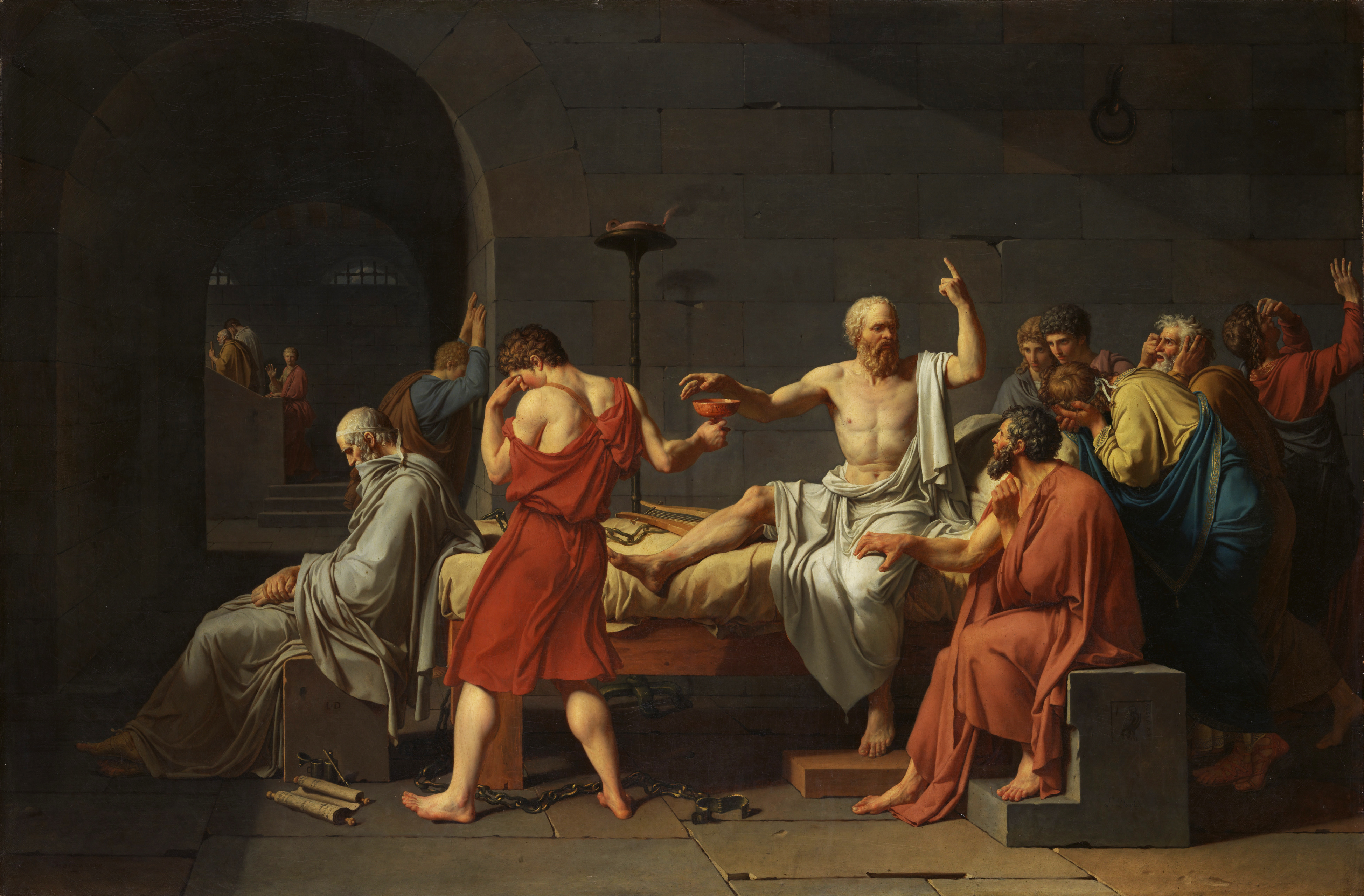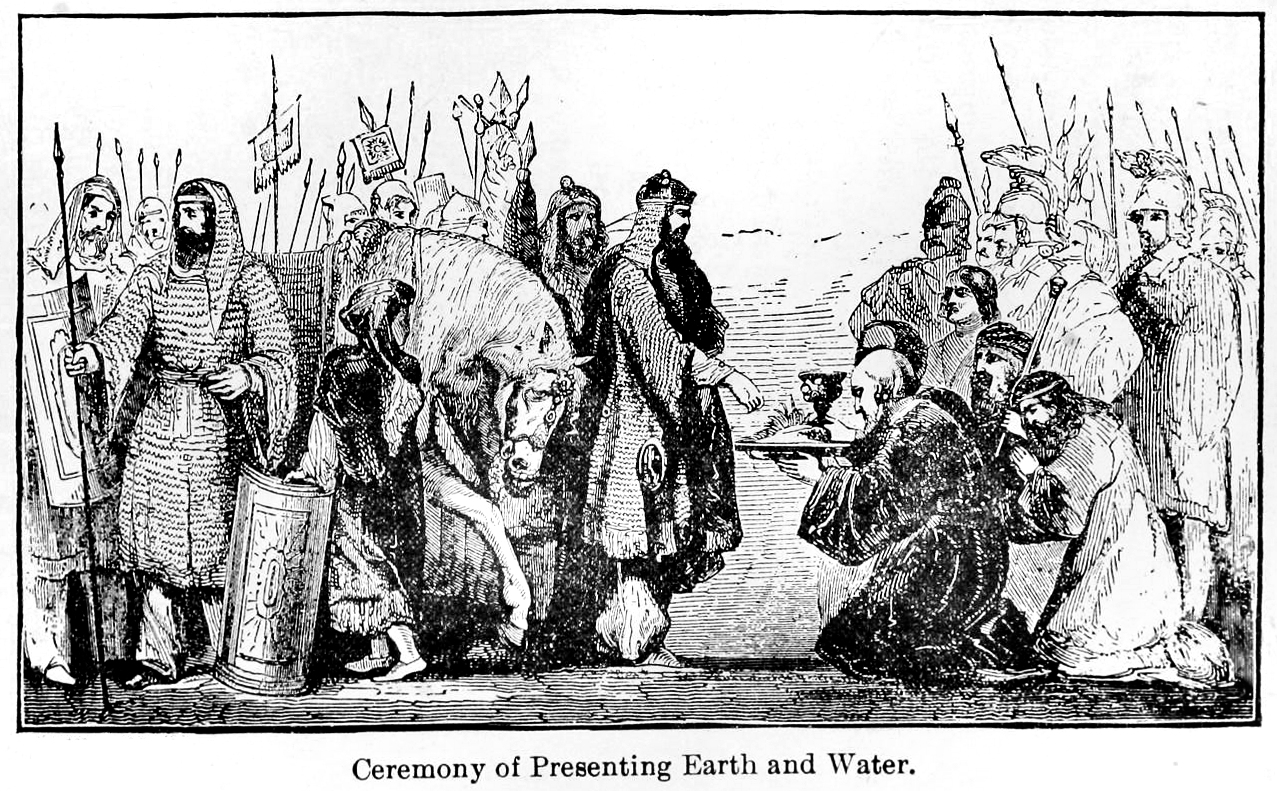|
Alopece
Alopece (), also spelt as Alopecae, was an asty-deme of the city of Athens, but located exterior to the city wall of Athens. Alopece belonged to the tribal group (''phyle'') of Antiochis. It was situated only eleven or twelve stadia from the city, and not far from Cynosarges. It possessed a temple of Aphrodite, and also apparently one of Hermaphroditus. Burial site The tomb of Anchimolius is near the temple of Hercules at Cynosarges, within Alopece. Natives Lysimachus II – son of Aristides I, Aristides II – son of Lysimachus II, Thucydides II – son of Melesias II, Melesias II – son of Thucydides I, Socrates, son of Sophroniscus (of the tribe of Alopece). Critobolus (c.5/4th century BC) son of Crito (also of the deme), both followers of Socrates. Hermogenes (c.445 to after 392 BC), was credited by Xenophon as being the source of much information about the latter part Socrates' life. In addition he is a participant in Cratylus, and is mentioned in Phaedo. Megacle ... [...More Info...] [...Related Items...] OR: [Wikipedia] [Google] [Baidu] |
Phaedo
''Phaedo'' (; , ''Phaidōn'') is a dialogue written by Plato, in which Socrates discusses the immortality of the soul and the nature of the afterlife with his friends in the hours leading up to his death. Socrates explores various arguments for the soul's immortality with the Pythagorean philosophers Simmias and Cebes of Thebes in order to show that there is an afterlife in which the soul will dwell following death. The dialogue concludes with a mythological narrative of the descent into Tarturus and an account of Socrates' final moments before his execution. Background The dialogue is set in 399 BCE, in an Athenian prison, during the last hours prior to the death of Socrates. It is presented within a frame story by Phaedo of Elis, who is recounting the events to Echecrates, a Pythagorean philosopher. Characters Speakers in the frame story: * Phaedo of Elis: a follower of Socrates, a youth allegedly enslaved as a prisoner of war, whose freedom was purchased at Soc ... [...More Info...] [...Related Items...] OR: [Wikipedia] [Google] [Baidu] |
Crito Of Alopece
Crito of Alopece ( or ; , ''gen''.: Κρίτωνος, ''Kríton Alōpekēthen''; c. 469 – 4th century BC) was an ancient Athenian agriculturist depicted in the Socratic literature of Plato and Xenophon, where he appears as a faithful and lifelong companion of the philosopher Socrates. Although the later tradition of ancient scholarship attributed philosophical works to Crito, modern scholars do not consider him to have been an active philosopher, but rather a member of Socrates' inner circle through childhood friendship. Life Crito grew up in the Athenian deme of Alopece alongside Socrates and was of roughly the same age as the philosopher, placing his year of birth around 469 BC.Nails, ''The People of Plato'', pp. 114-116. Plato's '' Euthydemus'' and Xenophon's ''Memorabilia'' both present him as a wealthy businessman who made his money from agriculture, which scholars speculate was conducted in Alopece itself. He seems to have married a woman with impressive aristocra ... [...More Info...] [...Related Items...] OR: [Wikipedia] [Google] [Baidu] |
Socrates
Socrates (; ; – 399 BC) was a Ancient Greek philosophy, Greek philosopher from Classical Athens, Athens who is credited as the founder of Western philosophy and as among the first moral philosophers of the Ethics, ethical tradition of thought. An enigmatic figure, Socrates authored no texts and is known mainly through the posthumous accounts of classical writers, particularly his students Plato and Xenophon. These accounts are written as dialogues, in which Socrates and his interlocutors examine a subject in the style of question and answer; they gave rise to the Socratic dialogue literary genre. Contradictory accounts of Socrates make a reconstruction of his philosophy nearly impossible, a situation known as the Socratic problem. Socrates was a polarizing figure in Athenian society. In 399 BC, he was accused of Asebeia, impiety and corrupting the youth. After Trial of Socrates, a trial that lasted a day, he was sentenced to death. He spent his last day in prison ... [...More Info...] [...Related Items...] OR: [Wikipedia] [Google] [Baidu] |
Antiochis (tribe)
Antiochis () was one of the ten tribes (''phylai'') into which the Ancient Athenians were divided. Location and history Is named after Antiochus, son of Heracles and Meda (daughter of Phylas, king of Ephyra). Antiochis comprised 13 demes: Aigilia, Alopeke, Amphitrope, Anaphlystos, Atene, Besa, Eitea, Eroiadai, Kolonai, Krioa, Pallene, Semachidai, and Thorai. Phalerum was a harbour belonging to the tribe. From this harbour the voyages of Theseus and Menestheus were said to have begun, for Crete and Troy respectively. Socrates belonged to this tribe. The tribe was in possession of the prytany in the Council, at the time of the events concerning the ten generals active for Athens' navy in the battle of Arginusae. Aristeides was in command of this tribe's contingent during the Battle of Marathon The Battle of Marathon took place in 490 BC during the first Persian invasion of Greece. It was fought between the citizens of Athens (polis), Athens, aided ... [...More Info...] [...Related Items...] OR: [Wikipedia] [Google] [Baidu] |
Asty
Asty (; ) was the physical space of a city or town in Ancient Greece, especially as opposed to the political concept of a ''polis'', which encompassed the entire territory and citizen body of a city-state. In Classical Athens, the ''asty'' was specifically the urban ''deme, demoi'' of Attica, as opposed to the inland (''mesogeia'') and coastal (''Paralia (trittys), paralia'') ''demoi'' that comprised each of the ten Attic tribes. Despite their name, most of the ''demoi'' of the ''asty'' were rural in character. Comprising about 42 of the 139 ''demoi'' of the Athenian state, they provided about 130 ''bouleutai'' in the 500-strong ''boule (ancient Greece), boule''. However, due to their proximity to the city of Athens, they were over-represented in the institutions of the Athenian democracy; in surviving records, the names of the ''bouleutai'' from the ''asty'' are mentioned 1.5 to 2 times as often as those from the rest of Attica. Asty Demoi Asty demoi located within Athens insi ... [...More Info...] [...Related Items...] OR: [Wikipedia] [Google] [Baidu] |
Hermogenes (philosopher)
Hermogenes (; fl. 5th–4th century BC) was an ancient Athenian philosopher best remembered as a close friend of Socrates as depicted by Plato and Xenophon. Life Hermogenes was the son of Hipponicus, brother of the wealthy Callias, and resident of the Alopece deme alongside Socrates. Although he belonged to the great family of Callias, he is mentioned by Xenophon as a man of very little property, suggesting that he may have been an illegitimate son of Hipponicus. Plato, on the other hand, suggests that he was unjustly deprived of his property by Callias, his brother. He is an interlocutor in Plato's '' Cratylus'' dialogue, where he maintains that all the words of a language were formed by an agreement of people amongst themselves. Xenophon cites Hermogenes as his source on the trial of Socrates in his ''Apology'', and Plato includes Hermogenes in the list of individuals present at Socrates' execution. Diogenes Laërtius Diogenes Laërtius ( ; , ; ) was a biographer of ... [...More Info...] [...Related Items...] OR: [Wikipedia] [Google] [Baidu] |
Alcmaeonids
The Alcmaeonidae (; , ; Attic: , ) or Alcmaeonids () were a wealthy and powerful noble family of ancient Athens, a branch of the Neleides who claimed descent from the mythological Alcmaeon, the great-grandson of Nestor. In the 7th to late 5th centuries BC, the Alcmaeonidae played a significant role in the developments and events that occurred in Athens. Such developments included overthrowing an Athenian tyrant, helping to lay the foundations of Athenian democracy, and having generals for Athens during the Peloponnesian War. The Alcmaeonidae were mentioned frequently throughout Herodotus' '' The Histories'', and many played a key role in shaping Athens. The first prominent Alcmaeonid was Megacles, who was exiled from the city and given a curse on him and his family. Furthermore, there was Cleisthenes, who became known as "the father of Athenian democracy" by numerous scholars and historians. Another famous Alcmaeonid was Pericles, whom Thucydides would later call "the first cit ... [...More Info...] [...Related Items...] OR: [Wikipedia] [Google] [Baidu] |
Cleisthenes
Cleisthenes ( ; ), or Clisthenes (), was an ancient Athenian lawgiver credited with reforming the constitution of ancient Athens and setting it on a democratic footing in 508 BC. For these accomplishments, historians refer to him as "the father of Athenian democracy". He was a member of the aristocratic Alcmaeonid clan. He was the younger son of Megacles and Agariste making him the maternal grandson of the tyrant Cleisthenes of Sicyon. He was also credited with increasing the power of the Athenian citizens' assembly and for reducing the power of the nobility over Athenian politics. In 510 BC, Spartan troops helped the Athenians overthrow the tyrant Hippias, son of Peisistratus. Cleomenes I, king of Sparta, put in place a pro-Spartan oligarchy headed by Isagoras. However, Cleisthenes, with the support of the middle class and aided by democrats, took over. Cleomenes intervened in 508 and 506 BC, but could not stop Cleisthenes and his Athenian supporters. Through Cleisthen ... [...More Info...] [...Related Items...] OR: [Wikipedia] [Google] [Baidu] |
Megacles
Megacles or Megakles () was the name of several notable men of ancient Athens, as well as an officer of Pyrrhus of Epirus. First archon The first Megacles was possibly a legendary archon of Athens from 922 BC to 892 BC. Archon eponymous The second Megacles was a member of the Alcmaeonidae family, and the archon eponymous in 632 BC when Cylon made his unsuccessful attempt to take over Athens. Megacles was convicted of killing Cylon's supporters (who had taken refuge on the Acropolis as suppliants of Athena) and was exiled from the city, along with all the other members of his genos, the Alcmaeonidae. The Alcmaeonidae inherited a '' miasma'' ("stain") that lasted for generations among Megacles' descendants. Alcmaeonidae The third Megacles, the grandson of the above eponymous archon, son of Alcmaeon and member of the Alcmaeonidae family, was an opponent of Pisistratus in the 6th century BC. He drove out Pisistratus during the latter's first reign as tyrant in 560 BC, bu ... [...More Info...] [...Related Items...] OR: [Wikipedia] [Google] [Baidu] |
Binghamton University
The State University of New York at Binghamton (Binghamton University or SUNY Binghamton) is a public university, public research university in Binghamton metropolitan area, Greater Binghamton, New York, United States. It is one of the four university centers in the State University of New York (SUNY) system. Since its establishment in 1946, the school has evolved from a small Liberal arts colleges in the United States, liberal arts college to a large research university. It is Carnegie Classification of Institutions of Higher Education, classified among List of research universities in the United States, R1: Doctoral Universities – Very high research activity. Binghamton's athletic teams are the Binghamton Bearcats, Bearcats and they compete in NCAA Division I, Division I of the National Collegiate Athletic Association (NCAA). The Bearcats are members of the America East Conference. History Establishment Binghamton University was established in 1946 in Endicott, New York, ... [...More Info...] [...Related Items...] OR: [Wikipedia] [Google] [Baidu] |
Cratylus (dialogue)
''Cratylus'' ( ; , ) is the name of a dialogue by Plato. Most modern scholars agree that it was written mostly during Plato's so-called middle period. In the dialogue, Socrates is asked by two men, Cratylus and Hermogenes (philosopher), Hermogenes, to tell them whether names are "conventional" or "natural", that is, whether language is a system of arbitrary signs or whether words have an intrinsic relation to the things they signify. The individual Cratylus was the first intellectual influence on Plato. Aristotle states that Cratylus influenced Plato by introducing to him the teachings of Heraclitus, according to M. W. Riley. Summary The subject of Cratylus is ''on'' ''the correctness of names'' (), in other words, it is a critique on the subject of naming (Baxter). When discussing an (''Wikt:ὄνομα, onoma'') and how it would relate to its subject, Socrates compares the original creation of a word to the work of an artist. An artist uses color to express the essence of hi ... [...More Info...] [...Related Items...] OR: [Wikipedia] [Google] [Baidu] |







